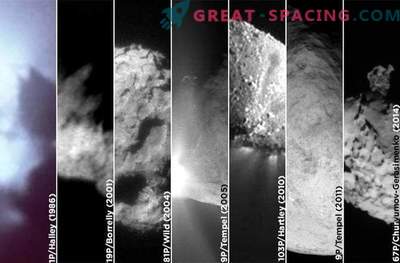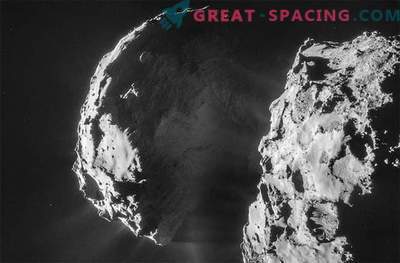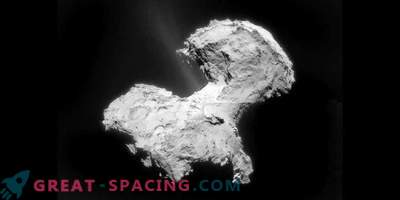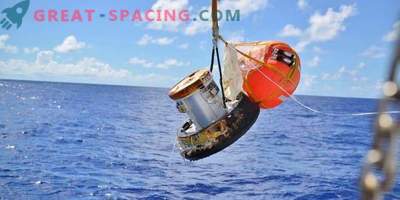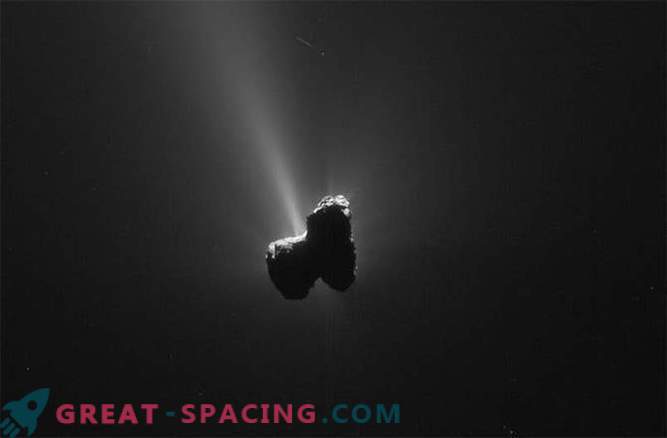
Scientists discovered a surprisingly regular cycle of formation and depletion of ice on the surface of a comet. The pattern is associated with the game of shadow and sunlight in the orbit of a celestial body.
Landing on a comet is in itself incredibly cool, and the mission of the Rosetta spacecraft, which managed to dock with a flying rock, is mind-blowing. During the observation various physical phenomena are explained, in particular, related to the force of attraction.
Measurements made by the Rosette probe by the European Space Agency in orbit comet 67P / Churyumov - Gerasimenko show that ice is formed when a certain portion of the comet is in the shade. When this area is illuminated by sunlight, the ice sublimates, that is, goes into a gaseous state.
"We observed this cycle over several revolutions of the comet ... We were surprised at the clear definition of the appearance and disappearance of ice on temperature and illumination," said planetary researcher Maria Cristina De Sanctis of the Rome Institute of Space Astrophysics and "Discovery News" planetology.
The discovery helps to understand why the surface comet can be relatively ice-free, as observed on 67P and other comets, although degenerating water is inherent in these celestial bodies. The cycle of condensation and sublimation explains how ice moves from the depths of the comet to its surface. "This water cycle is obviously an important process in the evolution of a comet," the researchers write in an article published in the latest issue of the journal Nature.
This alternation also clarifies the ability of comets to remain active. "This process may in some way extend the life of a comet," adds De Sanctis.
Whether this water cycle causes the strange form of a comet, which resembles a duck, scientists still cannot say for sure. One theory suggests that 67P are two comets that eventually become one. Another idea is that the area between the two parts of the comet, informally referred to as the “neck”, showed considerable activity for a long time, with the result that the celestial body, which was previously more circular, changed its shape.
"Continuing controversy is underway on this issue," said De Sanctis. “I personally believe that the“ neck ”may be the result of the evolution of a comet under the influence of different temperature regimes depending on the distance from the Sun.“ Rosetta ”sees that at a relatively large distance from the Sun the“ neck ”is the most active, and also in this Plot is most clearly represented by the phenomena of condensation and sublimation, "she says.
Over the next month, scientists will have the opportunity to study this theory. On Wednesday, "Rosetta" will launch a three-week expedition that will distance the spacecraft from the comet's core by about 932 miles. This is the largest distance since the docking probe with the comet in August 2014. Currently, the device is approximately 280 miles from the core. Scientists hope to get a widescreen image of a comet, which last month came as close as possible to Sun and entered a point known as perihelion. They also want to study the mechanism of interaction of the shell of ionized gas around the 67P with the solar wind.
"Although it may seem strange nowadays to move away from the nucleus, these studies are key to understanding the comet's behavior. They need to be carried out in the shortest possible terms after leaving the perihelion so that the comet does not have time to lose activity," explains Claire Valla.
